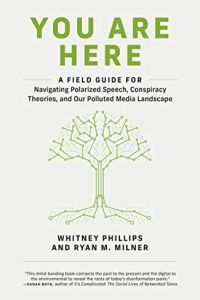Join getAbstract to access the summary!

Join getAbstract to access the summary!
Whitney Phillips and Ryan M. Milner
You Are Here
A Field Guide for Navigating Polarized Speech, Conspiracy Theories, and Our Polluted Media Landscape
MIT Press, 2021
What's inside?
The internet’s advent created a crisis of disinformation. Can society rescue the marketplace of ideas?
Recommendation
Professors Whitney Phillips and Ryan M. Milner offer a ray of hope for overcoming the information pollution of the modern media landscape. They trace the history of disinformation, false news and conspiracy theories – from the “Satanic Panics” of the 1980s and 1990s to today’s QAnon conspiracy. The academic flavor of the writing means this is not a breezy read, but the insights are fascinating and often terrifying. Phillips and Milner conclude with steps you can take to counter the onslaught of polluted information that undermines the marketplace of ideas.
Summary
About the Authors
Whitney Phillips is assistant professor in the Department of Communication and Rhetorical Studies at Syracuse University. Ryan M. Milner is associate professor of communication at the College of Charleston.



















Comment on this summary